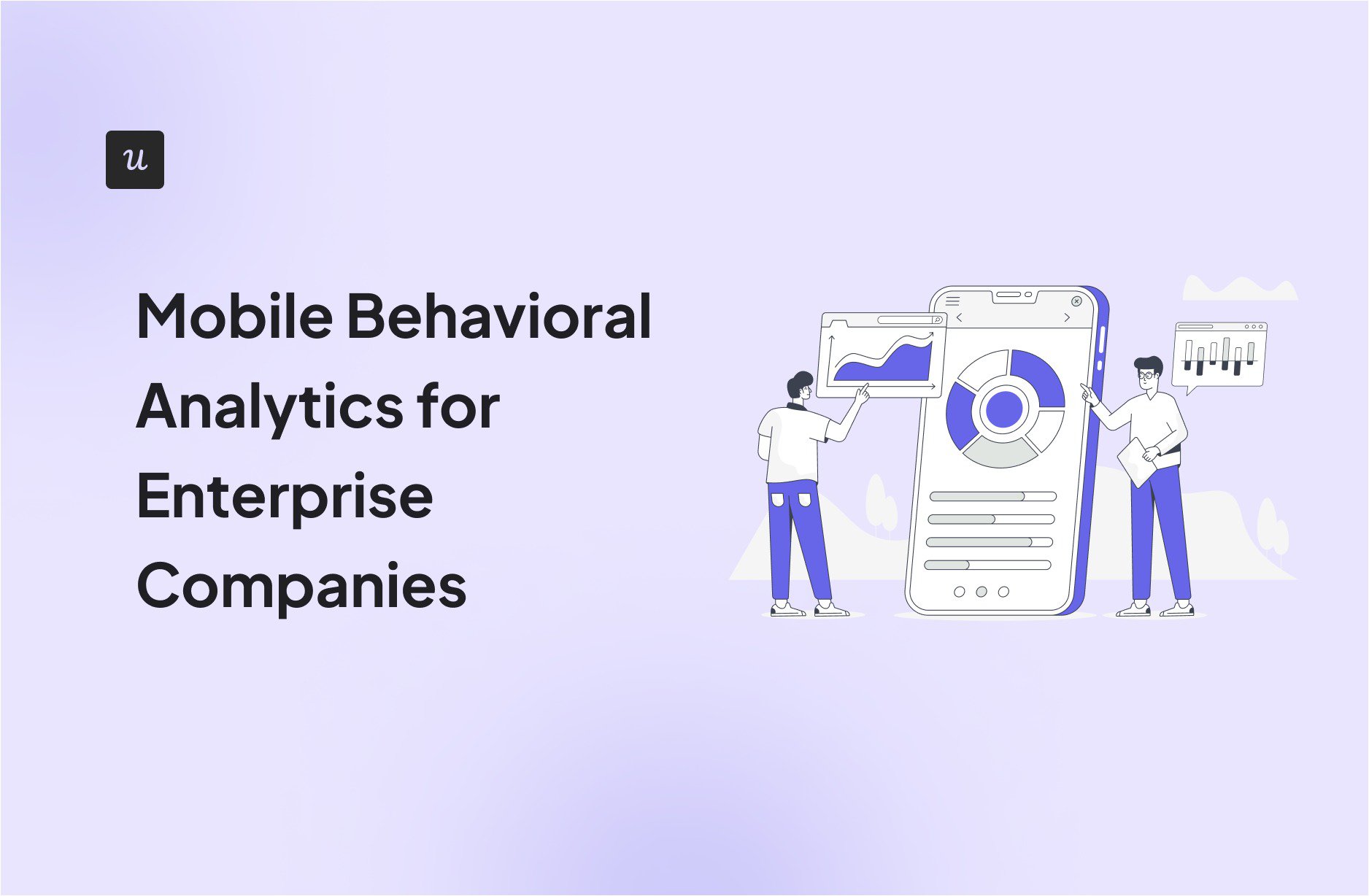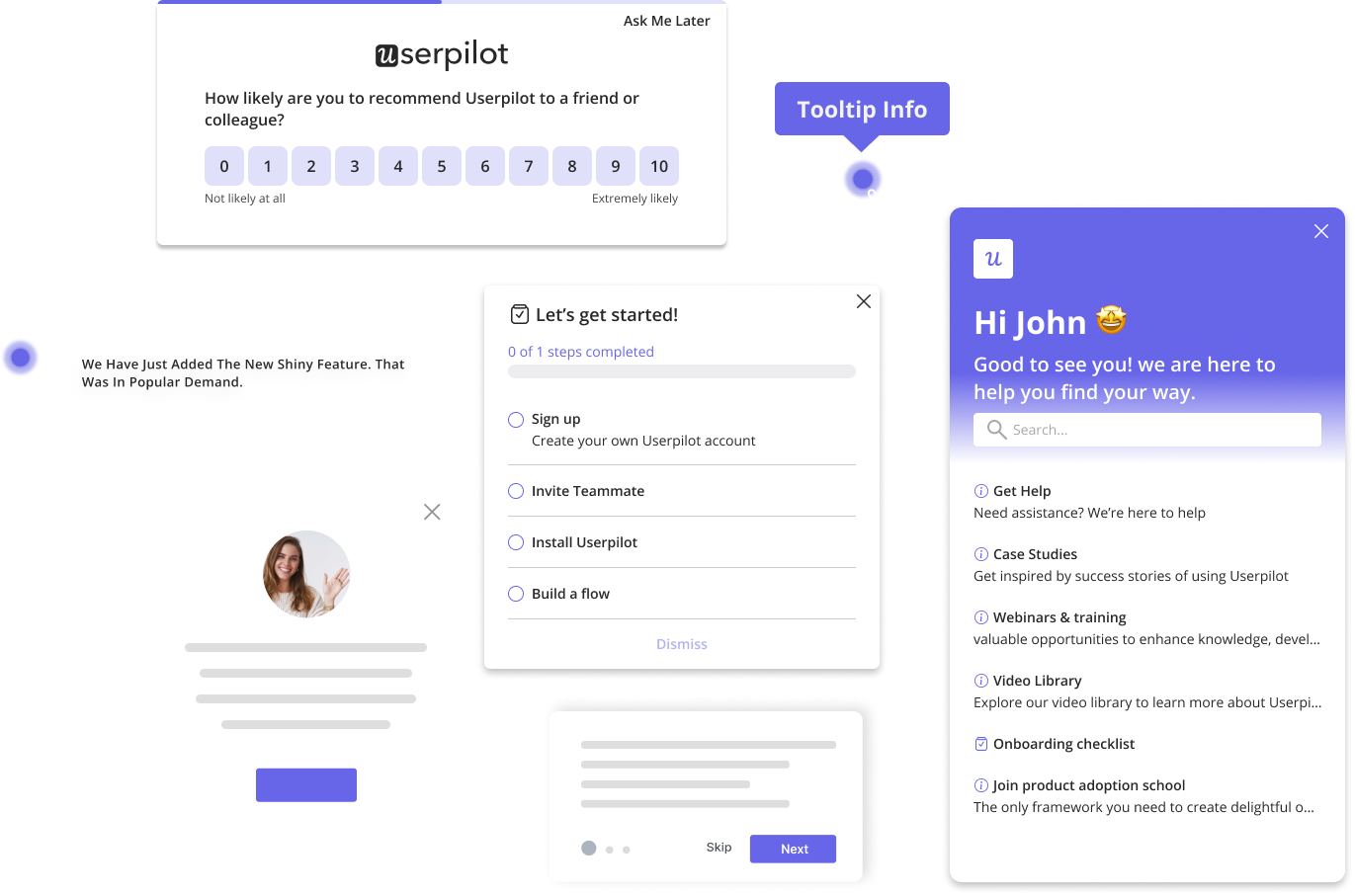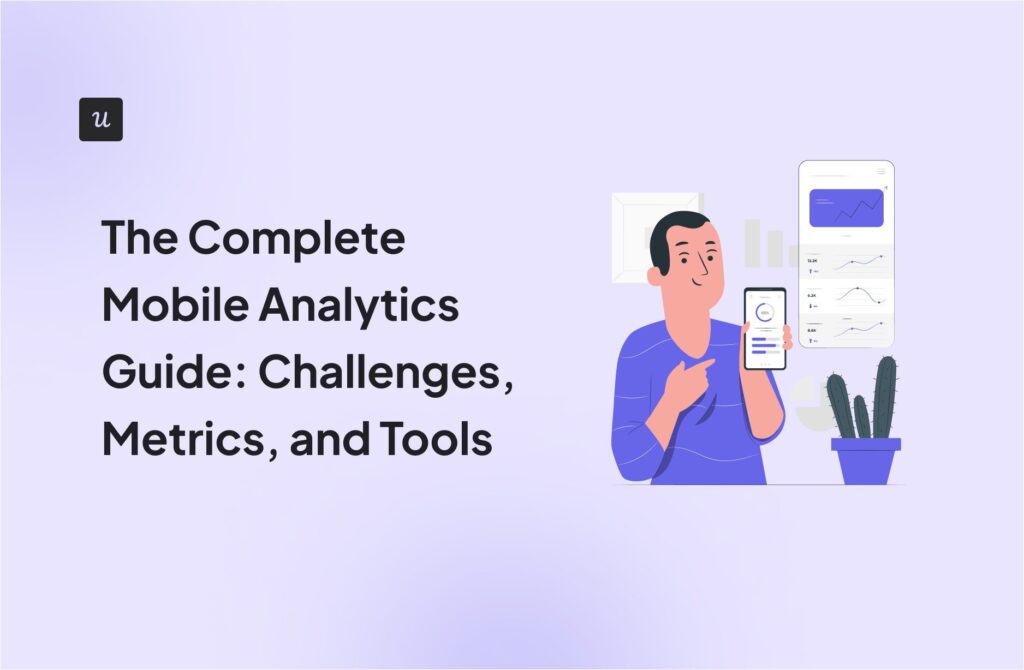
You know that users are active on mobile. But tracking what they’re doing inside the app? That’s a challenge many face, with teams often trying to use Google Analytics. While it works for web page views, it simply doesn’t offer the same deep visibility into the fragmented, contextual world of mobile apps.
That’s why at Userpilot, we’ve built mobile analytics that work for enterprise product teams. Our goal? Real visibility into user behavior without heavy dev work or incomplete data.
So, what makes mobile analytics different? Let’s quickly see what metrics matter and how we help teams finally understand and act on mobile behavior.
Try Userpilot Now
See Why 1,000+ Teams Choose Userpilot

How does mobile analytics differ from web analytics?
Web and mobile may share a product vision, but users behave differently on each platform. Treat mobile like just another screen, and you’ll miss critical context to optimize user journeys.
Over time, I’ve seen that mobile introduces tracking challenges most teams don’t immediately account for. Let me break down the key differences I’ve learned to watch for in analyzing data.
User flow on mobile is unique.
In my experience, one of the trickiest parts of mobile behavioral analytics for enterprise companies is understanding what a “session” actually means.
On mobile, user sessions don’t follow the clean start-to-finish patterns we expect from the web. Instead, they’re scattered. A user might launch your app, get distracted by a text, return five minutes later, and then minimize it again. So we can’t just measure time spent and call it a day.
Two things in particular make this even harder when it comes to user testing:
- Interruptions are constant. Users move between apps all the time. You risk losing data or misreading behavior if your analytics tool doesn’t handle those stop-start events well. I’ve seen Android apps crash or reset just from poorly handled context switches like phone calls or app minimization.
- The interface does more with less. A mobile screen doubles as a display, keyboard, and navigation tool. A tap might scroll, open a menu, or confirm a purchase, depending on where and how it’s used. That variability makes tracking user interactions more complex than it looks if you’re using traditional analytics tools built for desktops.
That’s why we should rely on a mobile app analytics platform built specifically for this kind of behavior. To optimize the user experience on mobile and make truly data-driven decisions, we need to track more than taps and time. We need to understand how users pause, bounce, return, and convert across fragmented sessions and unpredictable patterns.
Data availability for mobile teams was historically limited
On the web side, teams have always had access to rich clickstream data, server logs, and other behavioral data, making it easy to analyze user behavior in detail.
However, when I started working with mobile app analytics tools, I quickly realized how limited the data could be. Mobile teams often had to rely on manual event tracking with less granularity and lower reliability across various mobile devices, leading to challenges in obtaining quantitative data.
Part of the challenge comes from how mobile apps are built. You’re working across multiple platforms like iOS and Android, each with its own development frameworks, OS versions, and device types. Setting up consistent event tracking across all of them is technically complex.
Offline usage makes it even harder. If users interact with the app while they’re offline, and your tracking setup isn’t built to handle that, you lose critical behavioral data. It creates gaps in your user sessions, especially if the data doesn’t sync properly later.
Mobile teams often oversimplify key metrics.
Most mobile teams track DAU and MAU. That’s a start, but it’s not enough to truly understand user behavior.
These high-level metrics tell you how many users opened the app but not what they did or why they returned.
To get data-driven insights, I’ve learned to look at deeper mobile app metrics: screen views, event tracking, feature usage, and in-app purchases.
Without that layer of behavioral data, it’s nearly impossible to improve mobile app performance or track user engagement metrics in a meaningful way.
What metrics should mobile teams measure?
Once I moved beyond DAU and MAU, I started focusing on the metrics that actually explain how users interact with the app. These app engagement metrics reveal what’s working, what’s getting ignored, and where users drop off.
Let me walk through the ones that matter most.
App stickiness
DAU and MAU are just part of the story. What tells me if users are engaged is how often they return. App stickiness is about frequency, not just volume.
With Userpilot’s mobile dashboards, I can monitor daily, weekly, and monthly trends for users and companies, all in one view. It’s a quick way to track app engagement metrics and understand user behavior patterns over time.

This kind of visibility is important if you want to improve user engagement, optimize the mobile app experience, and enhance customer satisfaction while retaining customers longer through effective marketing campaigns.
Screen views
One thing I always track is which screens users view in the mobile app. It helps me understand what gets attention and what doesn’t.
With Userpilot, I can tag screens to monitor views, spot drop-offs, and identify which app parts are underused.

I also pair screen views with event-based analytics to see where users go and what they do there. This gives me real behavioral data I can act on.
If I find a key screen with low engagement, I don’t wait. I use in-app slideouts to highlight features or guide users through the next step. It’s more effective than sending a push notification after they’ve already left.

Mobile events
I tag key mobile events, such as taps, swipes, and features users interact with, to monitor how users engage with different parts of the app.
With Userpilot, I can filter events by platform, which helps me track mobile and web behavior side by side. It gives me context for how mobile activity fits into the broader customer journey.

How can enterprises analyze user behavior data to gain actionable insights?
Tracking is only the first step. To get value from behavioral analytics, I need to break down the data, find patterns, and act on what I learn from analyzing user interactions. Here’s how I do that inside Userpilot: using segmentation, funnels, and dashboards to turn raw events into product decisions.
See how users interact on different platforms with segmentation
One thing I rely on constantly is the ability to track how users behave across mobile and web. With Userpilot’s cross-platform analytics, I get a complete picture of each user’s journey—where they started, where they dropped off, and what nudged them to return.
I use segmentation to make this data meaningful. I can view individual user profiles that show mobile and desktop session data, user properties like device type, and recent activity history. This helps me understand how users engage across platforms without switching tools or guessing.

When I want to dig deeper, I build custom segments. For example, I might filter for users who opened a key screen in the mobile app but didn’t complete the next step. That tells me exactly where the adoption gap is, and who’s affected.

From there, my team doesn’t just observe the data. They act on it. We can trigger a contextual slideout to guide users back to the feature or send a push notification to re-engage them at the right moment.
That’s what makes segmentation so powerful, it helps me personalize the mobile app experience and close behavioral gaps quickly.
Pinpoint drop-offs in user journeys with funnel reports
Funnel reports show me how mobile users move through the product, from onboarding flows to feature adoption paths, enhancing our use of predictive analysis.
With Userpilot, I can build funnels from mobile app events and see where users drop off between steps. This helps me spot where the user journey breaks down and why certain actions aren’t being completed.
When I see drop-offs on a key screen or event, I follow up with a contextual slideout or trigger a push notification to re-engage that segment. It’s not just about tracking the issue, it’s about fixing it.

Monitor user engagement trends on dashboards
Dashboards help me monitor user engagement with the mobile app, including daily trends, active sessions, and feature usage across devices.
With Userpilot’s mobile app KPI dashboard, I can break down data by platform, spot shifts in user engagement, and track product usage over time.
When I notice a dip in repeat usage or a sudden spike in sessions, my team creates a targeted slideout or queues up a push notification campaign to keep users engaged.
Seeing these trends over time makes it easier to identify engagement gaps early. My team can optimize the user experience and make faster, data-driven decisions.

Rethink how you track user interactions on mobile apps!
Enterprise teams can’t afford to treat mobile as just another channel. Mobile users aren’t just using a smaller screen; they’re using apps in a completely different context. That’s why analytics needs to be just as adaptive.
Mobile users behave differently. Their sessions are more fragmented, their devices more complex, and their expectations higher. If we’re not tracking the right things and acting on them fast, we miss the moments that matter most.
With tools like user segmentation, funnel analysis, and event tracking, and engagement features like slideouts and push notifications, Userpilot helps teams understand behavior and improve it.
And that difference shows up in real product outcomes. As Dean Lindsay, Product Marketing Manager at Third Bridge, put it:

If you’re ready to level up your mobile app analytics, it starts with understanding how your users behave and giving your team the tools to turn valuable insights into action.
Curious how this works in practice? Book your free demo with Userpilot today!
FAQ
What do you mean by mobile analytics?
Mobile analytics refers to tracking and analyzing how app users interact with a mobile app. It includes data like screen views, taps, session length, and feature usage to help teams track key metrics, understand user behavior, and improve the app experience.
Who uses mobile analytics?
Product managers, marketers, UX teams, and mobile app developers use mobile analytics tools to monitor performance, measure engagement, and make data-driven decisions that improve app user retention and customer lifetime satisfaction.
What are the challenges of mobile analytics?
Mobile analytics is harder than web analytics because of device fragmentation, OS differences, offline usage, and inconsistent sessions. Without the right tools, including effective data visualization, tracking user behavior across mobile platforms is complex and often incomplete. That’s why features like behavioral analytics, event tracking, segmentation, and cross-platform dashboards are key for enterprise teams.







